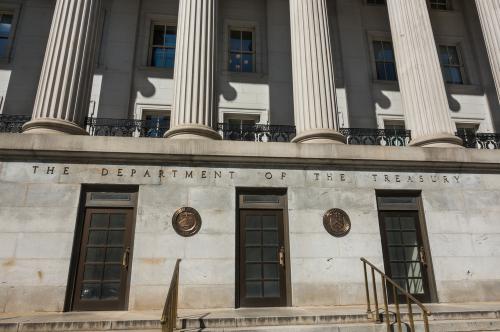Abstract
The often overlooked municipal debt market has attracted considerable attention lately amid predictions of widespread local government defaults and changes to the federal tax exemption for municipal bonds. This paper explains essential features of muni bonds and assesses recent policy and market developments. It concludes by offering guidelines for local decision makers regardless of how outstanding questions are ultimately resolved.
Introduction
Despite its reputation, the municipal bond market has been anything but “staid,” “boring,” and “wonky” lately (Shira, 2011). After downgrading U.S. long-term debt, Standard and Poor’s (S&P) downgraded thousands of state and local issuances backed by U.S. Treasuries and other federal guarantees. Together with Moody’s, S&P further indicated that it would review the ratings of several states and localities to assess their vulnerability to federal spending cuts and fluctuations in credit markets and the broader economy (Moody’s Investor Service, 2011; Standard and Poor’s, 2011a).
Nevertheless, stock market volatility has investors flocking in droves to munis and U.S. Treasuries, sending yields to historic lows (Figure 1). This flight to quality contrasts with only a few months ago when investors were fleeing muni bond mutual funds, withdrawing $47 billion from October 2009 to April 2010, or about half of the funds they had invested in since early 2009 (Albano, 2011). That exodus may have been a response to so-called headline risks, including warnings from financial analyst Meredith Whitney of “hundreds of billions of dollars” in municipal defaults (Kroft, 2011).
Although these predictions have not come to pass, uncertainty remains. In particular, state and local governments are still climbing out of a revenue hole created by the Great Recession (Dadayan, 2011). Looking ahead, they face unfunded pension and retiree health care liabilities variously estimated at $1 to $3 trillion (Novy-Marx and Rauh, 2011 and forthcoming; Pew Center on the States, 2011). Faced with its own fiscal challenges, the federal government will be seeking cuts to discretionary spending, roughly one-third of which tends to flow to states and localities, and potentially making long-term changes to the joint federal-state Medicaid program and U.S. tax code.
This policy brief assesses recent developments in muni bond markets and implications for local government borrowers. After a primer on muni debt, it evaluates predictions about municipal default and bankruptcy as well as changes to federal tax treatment and regulation of muni bonds. It also explores more fundamental shifts in muni markets. The brief concludes with guidelines for local decision makers regardless of how these issues are ultimately resolved.
The Brookings Institution is committed to quality, independence, and impact.
We are supported by a diverse array of funders. In line with our values and policies, each Brookings publication represents the sole views of its author(s).




